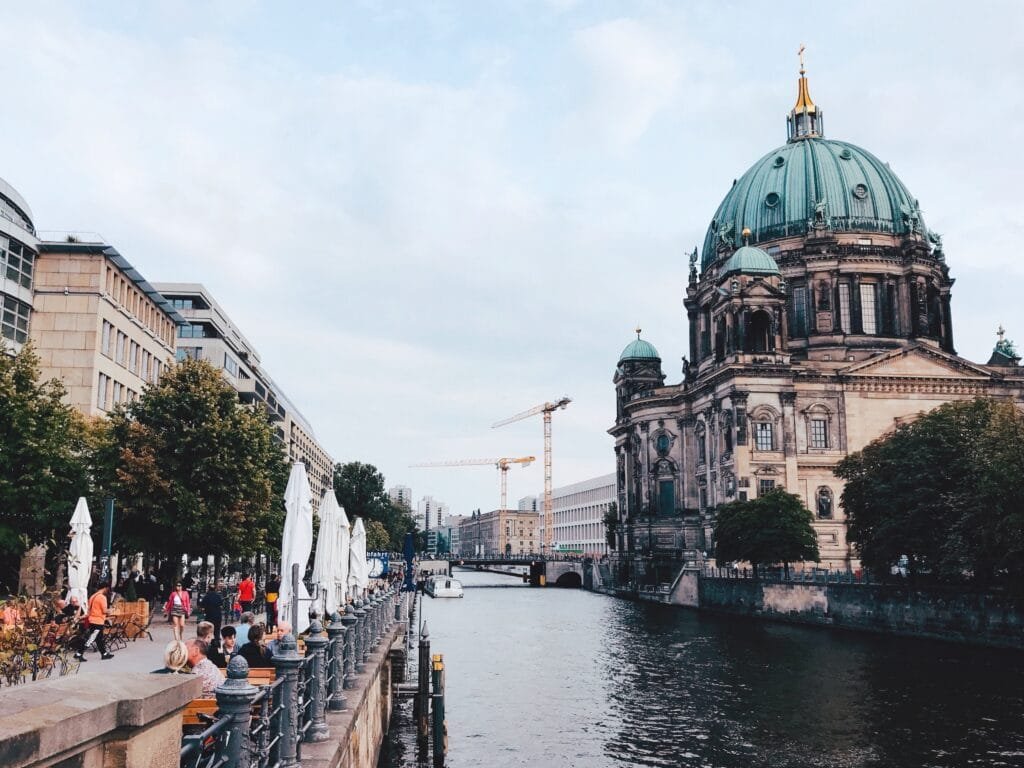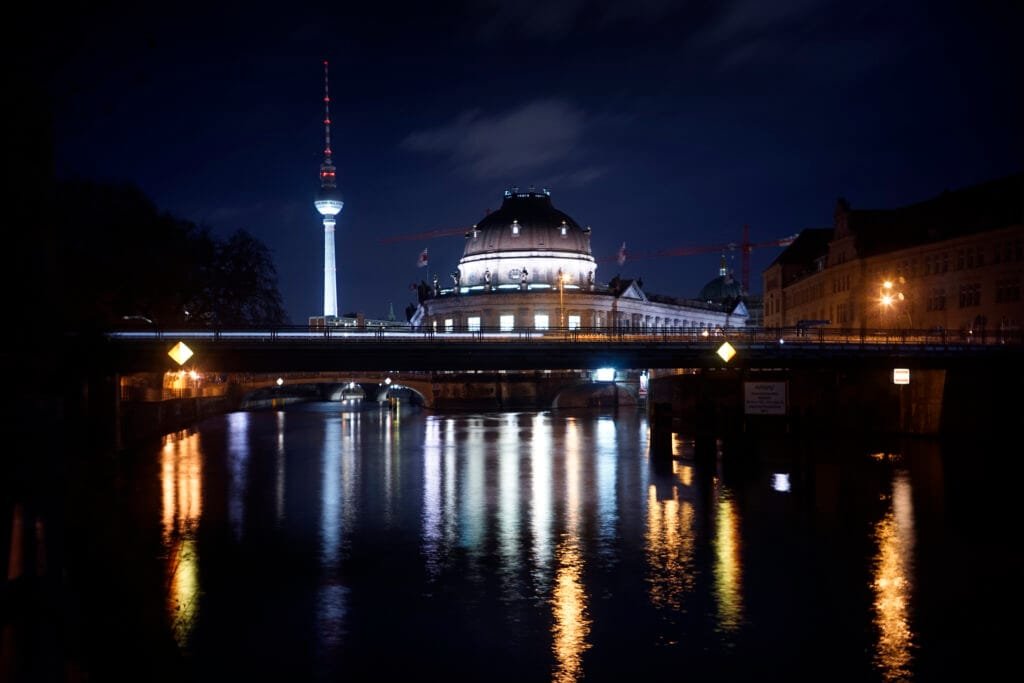Nestled in the heart of Berlin, Museum Island (Museumsinsel) is a treasure trove of art, history, and culture. This UNESCO World Heritage Site is home to five world-renowned museums that showcase humanity’s greatest achievements, from ancient artifacts to 19th-century masterpieces. Whether you’re an art enthusiast, a history buff, or a casual traveler, Museum Island is a must-visit destination that promises a journey through time.
Table of Contents
Introduction to Museum Island

Imagine standing on an island surrounded by centuries of history and some of the world’s most significant artifacts. That’s the experience of visiting Museum Island in Berlin. Located on the Spree River, this cultural hub is not just a collection of museums but a symbol of human achievement and resilience.
Designated a UNESCO World Heritage Site in 1999, Museum Island represents the pinnacle of Berlin’s dedication to preserving its rich heritage. With five iconic museums housed in stunning architectural masterpieces, the island offers a glimpse into ancient civilizations, European art movements, and more.
The History of Museum Island
The origins of Museum Island date back to the early 19th century when King Friedrich Wilhelm III of Prussia envisioned an area dedicated to art and culture. The first museum, the Altes Museum, was completed in 1830, marking the island’s transformation into a cultural landmark.
Friedrich Wilhelm IV expanded this vision, working with prominent architects like Karl Friedrich Schinkel and Friedrich August Stüler to create a cohesive artistic and historical space. By the late 19th century, the island had grown to include five extraordinary museums, each reflecting the grandeur of the era.
Museum Island also witnessed dramatic moments in history, including the devastation of World War II, which caused significant damage to many buildings. However, extensive restoration efforts have preserved its legacy, allowing it to thrive as one of the world’s most visited cultural sites.
Map Location
Museums on the Island: A Comprehensive Guide
Museum Island’s charm lies in its diverse collection of museums, each offering a unique perspective on art and history:
- Altes Museum:
As the first museum built on the island, the Altes Museum sets the tone with its stunning neoclassical architecture. It houses a remarkable collection of antiquities, including Greek and Roman sculptures and artifacts. - Neues Museum:
Reopened in 2009 after decades of restoration, the Neues Museum is home to the world-famous bust of Queen Nefertiti. It also features extensive collections of Egyptian, prehistoric, and early historical artifacts. - Alte Nationalgalerie:
This museum celebrates 19th-century art, showcasing works by German Romantic painters and Impressionists. Highlights include pieces by Caspar David Friedrich and Edouard Manet. - Bode Museum:
Known for its impressive dome, the Bode Museum houses Byzantine art, a vast coin collection, and captivating sculptures from various eras. - Pergamon Museum:
Arguably the most famous museum on the island, the Pergamon Museum is renowned for its large-scale reconstructions of ancient monuments, such as the Pergamon Altar and the Ishtar Gate.
Each museum offers a distinct experience, making it essential to dedicate ample time to explore the island fully.
UNESCO World Heritage Status
Museum Island’s designation as a UNESCO World Heritage Site is a testament to its cultural and historical significance. Recognized in 1999, the island was honored for its unique combination of architectural grandeur and invaluable collections.
The site represents the evolution of museum design and the importance of preserving cultural heritage. Its restoration efforts and the careful curation of its exhibits showcase Berlin’s commitment to safeguarding history for future generations.
Architectural Highlights of Museum Island
Museum Island is as much about its architectural brilliance as it is about its collections. Each museum reflects the neoclassical and Baroque styles of its time, offering a visual feast even before stepping inside.
- Altes Museum:
Designed by Karl Friedrich Schinkel, the Altes Museum is a neoclassical masterpiece. Its grand colonnade and rotunda, inspired by the Pantheon in Rome, set the stage for what would become Berlin’s cultural hub. - Neues Museum:
Friedrich August Stüler’s design blends classical and modern elements. The meticulous restoration by David Chipperfield preserved war-damaged sections, creating a striking contrast between history and modernity. - Pergamon Museum:
Built in the early 20th century, this imposing structure was designed to house monumental artifacts. Its multiple wings and massive halls were specifically tailored to showcase reconstructions like the Pergamon Altar. - Bode Museum:
Located at the island’s northern tip, the Bode Museum stands out with its Baroque dome and elegant riverside setting. Its circular design reflects the artistic flow of the sculptures housed within. - Alte Nationalgalerie:
Modeled after a Greek temple, the Alte Nationalgalerie exudes grandeur with its high staircase, Corinthian columns, and prominent terrace offering stunning views of the island.
These buildings, along with their intricate restorations, represent Berlin’s resilience and dedication to preserving its cultural heritage.
Must-See Exhibits on Museum Island
Museum Island is home to some of the most famous artifacts and artworks in the world. Here are the must-see highlights:
- Nefertiti Bust (Neues Museum):
This stunning limestone bust of the Egyptian queen, dating back to 1345 BCE, is one of the most iconic artifacts on the island. - Pergamon Altar (Pergamon Museum):
A monumental structure from ancient Greece, the Pergamon Altar is adorned with intricate friezes depicting the battle between gods and giants. - Ishtar Gate (Pergamon Museum):
This vividly colored gate from ancient Babylon, adorned with depictions of lions and dragons, is a breathtaking piece of history. - Romantic Paintings (Alte Nationalgalerie):
Masterpieces by Caspar David Friedrich, such as The Monk by the Sea, capture the Romantic era’s fascination with nature and emotion. - Sculptures (Bode Museum):
The museum’s collection of Byzantine and Gothic sculptures includes works that span centuries of European art history.
Each exhibit tells a unique story, offering visitors a deeper connection to human history and creativity.
The Reconstruction and Restoration Journey
Museum Island has endured centuries of change, including severe damage during World War II. By the war’s end, many of its buildings were left in ruins, with priceless artifacts scattered or destroyed.
- Post-War Efforts:
The island’s restoration began immediately after the war but faced challenges during Berlin’s division. The Cold War further complicated efforts, as some museums fell under East Berlin’s control while others remained in the West. - The Museum Island Master Plan:
In 1999, Berlin launched an ambitious plan to restore and modernize the island. This included repairing war-damaged structures, enhancing visitor facilities, and integrating the museums into a cohesive cultural complex. - Reopening Highlights:
- The Neues Museum, which remained closed for decades, reopened in 2009 after an extensive restoration led by David Chipperfield.
- The Pergamon Museum’s ongoing renovations aim to improve access to its exhibits while preserving its historic architecture.
These efforts ensure that Museum Island remains a cultural beacon for future generations.
James-Simon-Galerie: The Gateway to Museum Island
The James-Simon-Galerie, opened in 2019, serves as the central visitor center for Museum Island. Designed by architect David Chipperfield, this modern structure complements the island’s historic aesthetic while providing essential amenities.
- Functionality and Design:
The gallery acts as a bridge between the island’s museums, offering ticketing services, a café, and an auditorium. Its clean, minimalist design contrasts with the ornate styles of the surrounding buildings. - Exhibition Space:
The James-Simon-Galerie also hosts temporary exhibits and multimedia displays, offering a fresh perspective on the island’s collections. - Visitor Experience:
By providing a central starting point, the gallery streamlines the Museum Island experience, making it easier for visitors to navigate the sprawling complex.
Tips for Visiting Museum Island
To make the most of your trip to Museum Island, consider these tips:
- Plan Your Visit:
- Purchase a day pass to access all five museums.
- Arrive early to avoid crowds, especially at popular exhibits like the Nefertiti bust and Pergamon Altar.
- Guided Tours:
Opt for a guided tour or an audio guide to gain deeper insights into the history and significance of the collections. - Accessibility:
Museum Island is wheelchair-accessible, with elevators and ramps available in most buildings. - Best Time to Visit:
- Weekdays are generally quieter than weekends.
- Visiting in the late afternoon allows you to enjoy the museums and see the island illuminated at night.
- Dining and Relaxation:
Take a break at the James-Simon-Galerie café or enjoy a picnic at Lustgarten, a beautiful park adjacent to the museums.
Nearby Attractions Around Museum
Museum Island’s central location makes it an excellent starting point for exploring Berlin’s other landmarks.
Berlin Cathedral (Berliner Dom)
Located next to Museum Island, this majestic cathedral offers stunning architecture and panoramic views from its dome.

Lustgarten
A tranquil park perfect for relaxing between museum visits.
Unter den Linden
This iconic boulevard leads from Museum Island to Brandenburg Gate, lined with shops, cafes, and historic sites.
Humboldt Forum
A new cultural complex showcasing art and artifacts from around the world.
Alexanderplatz
Just a short walk away, this vibrant square features shopping, dining, and the iconic TV Tower.
Conclusion
Museum Island is a cultural jewel that brings history, art, and architecture together in one unforgettable destination. Whether you’re marveling at ancient relics, exploring neoclassical halls, or enjoying the island’s serene atmosphere, this UNESCO World Heritage Site offers a unique experience.
For anyone visiting Berlin, Museum Island is more than a recommendation—it is essential to understanding the city’s rich heritage and deep connection to the past.
Read More…
- Discover the Memorial of the Berlin Wall, a powerful symbol of both division and unity in Germany’s history. This moving site commemorates the impact of the Wall and its eventual fall, shaping the course of reunification. For more details, check out the article on Memorial of the Berlin Wall: A Symbol of Division and Unity.
- Explore the iconic Brandenburg Gate, one of Berlin’s most famous landmarks, symbolizing Germany’s reunification and its history. It stands as a monument to peace and freedom. For more details, check out the article on Brandenburg Gate: The Iconic Landmark of Berlin.
FAQs
1. How many museums are on Island?
There are five museums: Altes Museum, Neues Museum, Alte Nationalgalerie, Bode Museum, and Pergamon Museum.
2. What is the most famous artifact on Island?
The bust of Nefertiti in the Neues Museum and the Pergamon Altar in the Pergamon Museum are among the most famous artifacts.
3. Is Island suitable for children?
Yes, many museums offer family-friendly exhibits and activities, making it an educational and engaging experience for kids.
4. How much time should I spend on Museum Island?
A full day is recommended to explore all five museums and nearby attractions.
5. Can I visit Island at night?
While the museums close in the evening, the island itself and its illuminated buildings are beautiful to explore at night.
For more details about Museum Island in Berlin, including its museums and history, you can visit the official website of the museum collections at the State Museums of Berlin This provides in-depth information on the island’s cultural significance and the individual museums like the Pergamon Museum, Bode Museum, and more.

